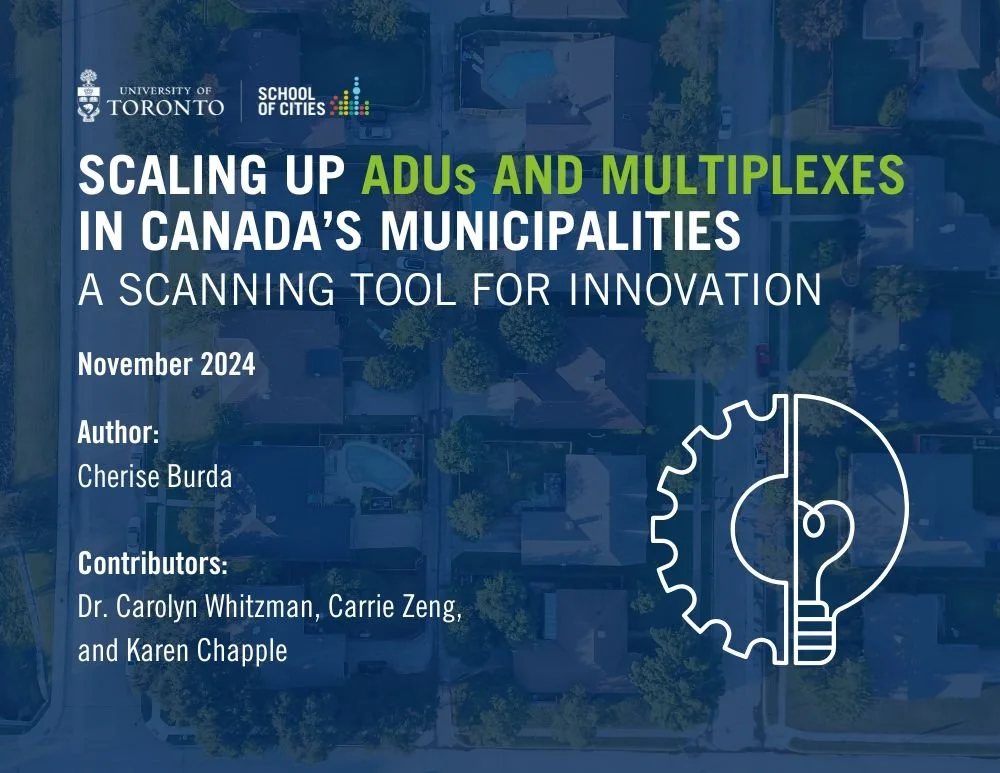
Putting Affordability in the Missing Middle
This initiative explores and advances ways to add gentle density to our residential neighbourhoods to achieve affordability and equity.
Housing affordability is a crisis across Canada, with all levels of government looking for solutions. For years, planners, architects, housing advocates and experts have been calling for Missing Middle housing, ranging from garden suites to triplexes to townhouses and 6-story buildings added to existing residential neighbourhoods to increase housing supply and offer more affordable home options. In response, some municipalities and provincial governments are acting to end exclusionary zoning and are introducing programs and reforming policy to add Missing Middle housing to our residential neighbourhoods.
But will these programs yield truly affordable housing? Early evidence indicates that Missing Middle developments are generating market-rate products and, in some US cities, eliminating single family zoning restrictions is pushing up land and property prices, continuing to render these neighbourhoods exclusive and out of reach to low-income, under-represented and racialized residents. If we want affordable and equitable housing to be part of the Missing Middle, we need to do more than change zoning.
Scaling up ADUs and Multiplexes in Canada’s Municipalities: A scanning tool for innovation
November 2024
This tool describes factors that can help enable the development of ADUs and multiplexes in residential neighbourhoods in Canada. It identifies the zoning and policy landscape in municipalities and helps missing middle innovators scale up what they do best - design, build, facilitate, manufacture or finance small scale housing.
Enabling the Missing Middle: Definitions, evidence, barriers and promising practices
November 2024
This research collects evidence from local and international practices to suggest a set of Missing Middle (MM) enablers. There is evidence that MM reform, if comprehensively undertaken, can increase affordable, well-located supply of a range of homes, which in turn can decrease rents for low and moderate-income households. MM enablers range from zoning and building code reforms to reducing or eliminating development taxes that punish new development.
Tracking Gentle Density in Canada
November 2024
Visit this webpage to explore the uptake of detached and attached accessory dwelling units (ADUs) in multiple cities across Canada using charts and interactive maps. The webpage also summarizes the status of current municipal and provincial policies.
Tracking Residential Dwelling Conversions
July 2024
On this page, we chart how different Canadian urban regions are doing in terms of creating new residential dwelling units from building conversions, over the five year period of 2019 to 2023.
Targeting the Right Housing Supply in Canada
April 2024
A set of Housing Supply Mix Strategy briefs based on research conducted by School of Cities and City Building TMU to inform the Task Force for Housing and Climate regarding Canada’s housing needs.
Policy Brief
February 2024
Enabling Home Ownership by Streamlining Multi-Unit Residential Buildings Stratification and Co-Ownership in Ontario examines co-ownership models that enable multiple individuals or families to jointly purchase and manage residential properties, thereby reducing individual financial burdens. The brief analyses various co-ownership structures, their benefits, potential challenges, and offers policy recommendations in Ontario to support and regulate such arrangements.
Reno-ductions
January 2024
How often is Toronto losing dwelling units due to reno-ductions of small multi-family structures such as duplexes and triplexes, into single-family homes?
Tracking Gentle Density in Toronto
Curious to see where and how many secondary and backyard suites are in Toronto? Check out our interactive permit data map to track the uptake (or lack thereof) over the past 10 years.







